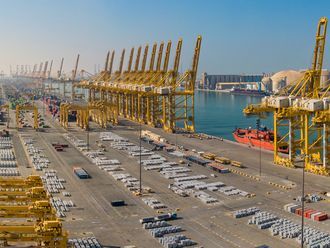Moscow: Russia fell short of its oil-output cut under the Opec+ deal in March even as the country deepened its curbs.
The nation’s production at the end of March was 190,000 barrels a day below October levels, Energy Minister Alexander Novak said in a statement on the ministry’s website on Tuesday. That’s smaller than the 228,000 cut pledged in Russia’s deal with allies in the Organisation of Petroleum Exporting Countries (Opec).
Excluding output from production-sharing agreements — projects including international partners such as Exxon Mobil Corp. — Russia’s output was 225,000 barrels a day below October by the end of March, according to the statement. That’s the first time the ministry has mentioned PSAs when assessing the size of its cut and didn’t immediately respond to questions on why its output target should be adjusted in this way.
Novak said that Russia had reached “the agreed level of reductions, as planned,” at the start of April. This month, the country aims to keep crude production at the agreed levels, according to the statement.
Pledged cuts
Under the Opec+ deal, Russia agreed to reduce its crude output by 228,000 barrels a day from its October baseline in the first quarter of this year. These were the second-biggest curbs promised within the group, following Saudi Arabia’s. Russia then said it would keep output flat through the second quarter.
Russia, one of the architects of the deal between Opec and its partners, accelerated the pace of cuts in March. Its average production for the whole month was 130,000 barrels a day below October, compared with 97,000 barrels in February, according to Energy Ministry data.
There are three projects under PSAs, which include Sakhalin-1 with Exxon Mobil Corp as operator, Sakhalin-2 with Gazprom PJSC-led Sakhalin Energy as operator and the Khariaga oil deposit operated by Russian refiner Zarubezhneft OAO.
Bloomberg calculations, based on data from the Energy Ministry’s CDU-TEK unit, show that Russia is still lagging behind its pledged curbs despite ramping up the pace. The country produced 47.8 million tons of crude and condensate in March, including output at PSA projects, according to preliminary data from the CDU-TEK. That’s equivalent to 11.298 million barrels a day, down 120,000 barrels per day from October.
The difference may be explained by a variation in methodology, as the ministry uses an individual conversion ratio from tons to barrels for each field, whereas Bloomberg uses a unified ratio of 7.33 barrels a ton.












